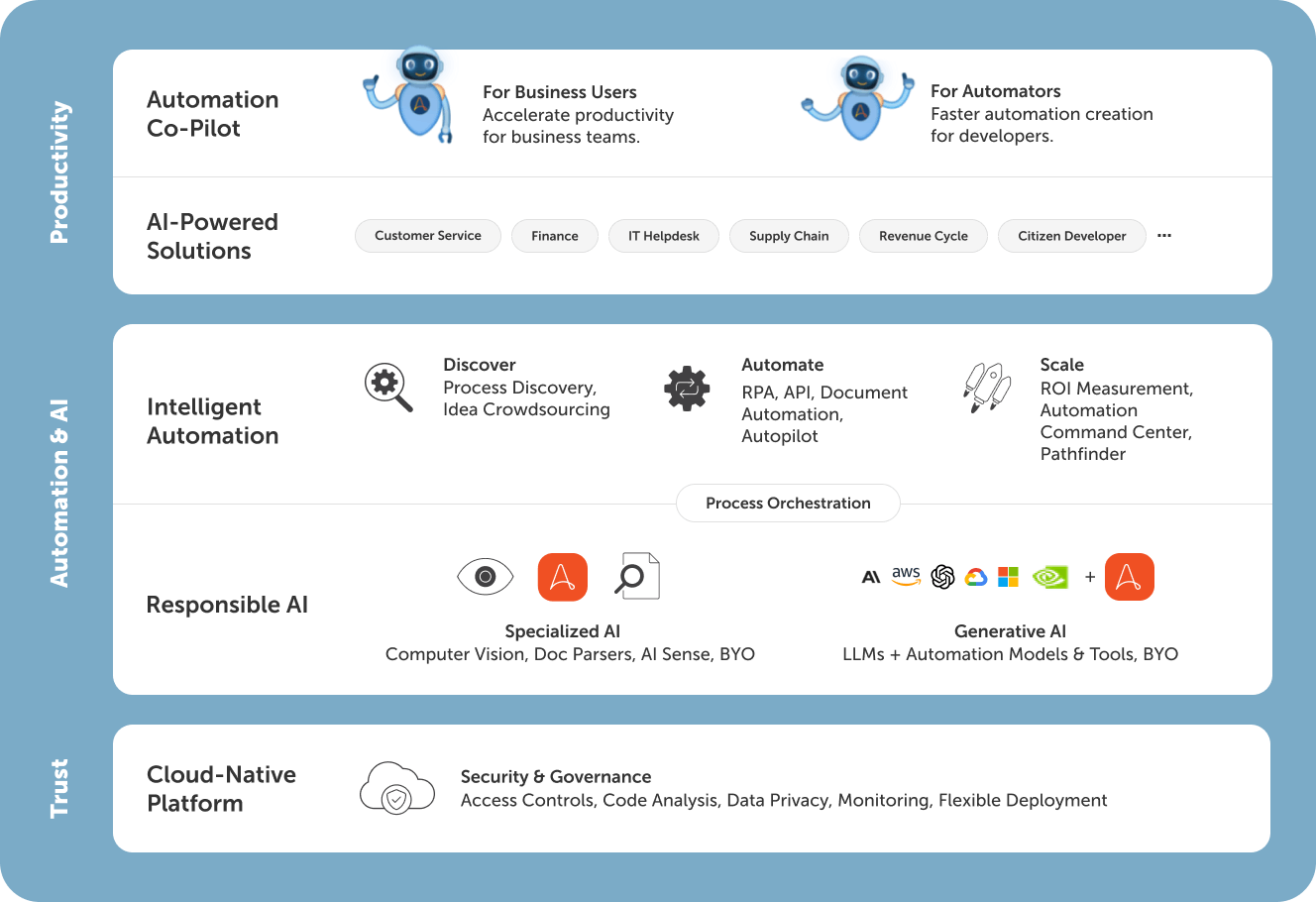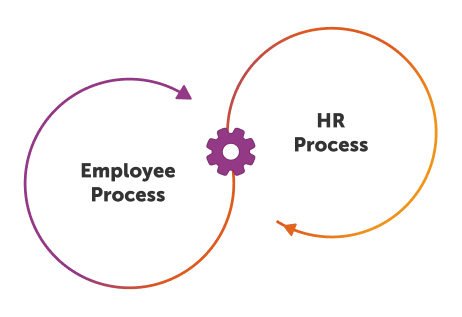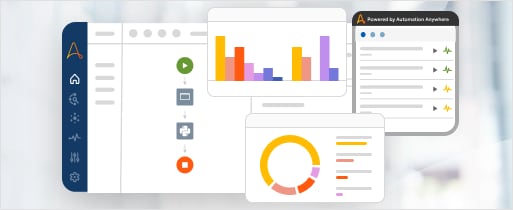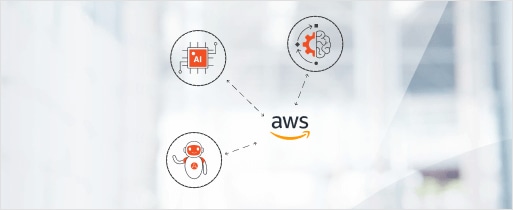The benefits of process orchestration.
Process orchestration drives efficiency and visibility, supporting the automation of end-to-end workflows across all operations.
Boost process efficiency
Speed execution and eliminate hiccups and delays with process orchestration to connect and coordinate every process segment.
Improve operational visibility
Gain process-wide oversight and valuable insights into business operations from process orchestration data.
Optimize customer experiences
Deliver faster response times, greater accuracy, and consistent results in real time with optimized, synchronized automations.
Simplify compliance
Increase the effectiveness of compliance and risk management by centralizing, standardizing, and auditing processes.
Capitalize on new technologies
Benefit from emerging technologies by facilitating the seamless integration of new innovations into existing workflows.
How does process orchestration work?
Process orchestration works by integrating and coordinating independent processes and systems within the organization to streamline and automate workflows, ensuring every part of enterprise operations runs smoothly and in sync. To achieve seamless execution, process orchestration acts as a bridge between different systems and applications so data moves effortlessly from one process to another, eliminating bottlenecks and errors caused by manual data entry. Process orchestration also adapts resources on the fly, tailoring them to immediate needs for peak efficiency and scalability.
Process orchestration combines a comprehensive suite of capabilities including intuitive workflow design, plug-and-play integrations and APIs, robust task automation and scheduling, and real-time monitoring and analytics. Advanced error handling and recovery mechanisms, along with strong security features like access control and encryption, enable holistic controls and proactive process management.
Tour the secure Agentic Process Automation System
What to look for in a process orchestration solution.
Process orchestration isn't a one-size-fits-all solution. After considering your technical requirements and short- and long-term business objectives, identify solutions that seamlessly integrate with your existing systems and workflows, and ensure scalability, flexibility, and security. To maximize ROI and avoid common challenges teams face, look for solutions that are easy to use, offer comprehensive support, and leverage the latest technology—most notably generative AI.
Scalability
Organizations constantly grow and evolve, meaning process orchestration solutions must help future-proof automation initiatives. If a solution is unable to handle an ever-increasing number of workflows and volumes of data, it may result in performance degradation, delays, processing inefficiencies, or storage constraints. To avoid scalability bottlenecks, look for a cloud-native solution that can automatically adjust resource allocation in response to changing demands.
User-friendly interface
To maximize user adoption and ROI, look for a solution with a user-friendly interface that empowers non-technical users to create and manage automations easily. Low-code implementation, intuitive design, and accessible features streamline the automation process, ultimately promoting efficiency and collaboration to drive the long-term success of automation initiatives.
Robust integration capabilities
Effective integration ensures smooth communication and data exchange between disparate systems. This seamless exchange is essential for organizations hoping to reap all of the benefits of process orchestration. Choose a solution that supports a wide range of integrations—including legacy systems, modern applications, and third-party tools—and offers out-of-the-box command packages.
AI-enabled
Machine learning, natural language processing, computer vision, and generative AI have expanded the capabilities of process orchestration. Solutions that apply Intelligent Automation to process orchestration will be able to automate increasingly complex processes, enhance connectivity at every step, and automatically update systems of record.
Process orchestration use cases by industry.
Apply process orchestration to manage complex business processes with multiple endpoints.
Financial services
Gain full visibility of the processes that strengthen security and compliance to mitigate financial risks.
Manufacturing
Reduce waste, costs, and time-to-market by boosting efficiency on the factory floor and back-office.
Life sciences
Break down bottlenecks and data silos to accelerate pharmacovigilance (PV) and complaint handling.
Healthcare
Streamline workflows across IT systems to deliver excellent patient experience, robust security, and compliance.
The evolution of process orchestration.
The development of process orchestration tools reflects the growing demand for operational efficiency and adaptability.
Getting started
With the rise of the cloud, organizations quickly accumulated applications to facilitate the complexity of the modern workplace. Enterprise application integration (EAI), focusing on connecting disparate systems through middleware, laid the groundwork for process orchestration by highlighting the need to unify workflows across multiple applications.
Getting things done
Low-code automation accelerated business process management (BPM) strategies; however, faster digital transformation of processes added a new layer of complexity to aligning and synchronizing operations. Process orchestration became necessary to connect these efforts, bringing greater visibility and integration across systems.
Getting smart
Cloud-based orchestration represented a paradigm shift towards more agile and efficient workflow management. Integrating process orchestration with Intelligent Automation added connectivity at every step for automatic system-of-record updates and discovery of new opportunities for process improvement.
Making change
Continuous advances in Intelligent Automation are fueling the move toward fully autonomous operations, where orchestration tools power autonomous decision-making and dynamic process adjustments in real time, and orchestration data fuels predictive analytics.
Process orchestration. Part of a complete Intelligent Automation platform.
Scale and extend Intelligent Automation across complex business workflows with process orchestration built into the Agentic Process Automation System.

Frequently asked questions.
What processes lend themselves to process orchestration?
Process orchestration encompasses all business processes, working to synchronize and connect data and workflows across the organization. Processes that touch multiple business functions are immediate candidates for process orchestration. For example, various back-office processes, including supplier onboarding, order/invoice processing, customer contracts, and complaints handling, benefit from process orchestration to ensure cohesive and efficient operations.
What should you look for in a process orchestration solution?
The best process orchestration tools will work seamlessly with Intelligent Automation and offer enterprise-grade security and scalability. Artificial intelligence is currently making a big impact in this space, so it’s prudent to find a vendor developing solutions that are AI-enabled.
How does process orchestration compare to process automation?
Process orchestration and process automation are related strategies to digitally transform business operations. Process automation refers to automating repetitive tasks and workflows. Process orchestration refers to connecting and coordinating these isolated automated tasks to create end-to-end automated workflows.
What are the benefits of process orchestration vs. task automation?
Process orchestration amplifies the value of task automation by connecting disparate automated tasks into cohesive workflows. It looks at the big picture, coordinating process components and ensuring that all the systems and apps your business relies on are connected. The result is improved efficiency and productivity, compliance, security, customer experience, and reduced costs.
How does process orchestration compare to workflow management?
While workflow management ensures individual tasks are optimized as part of business process management (BPM) approaches, process orchestration optimizes entire business processes from end to end. Process orchestration is a holistic solution to drive digital transformation spanning an organization’s people, processes, and systems.







